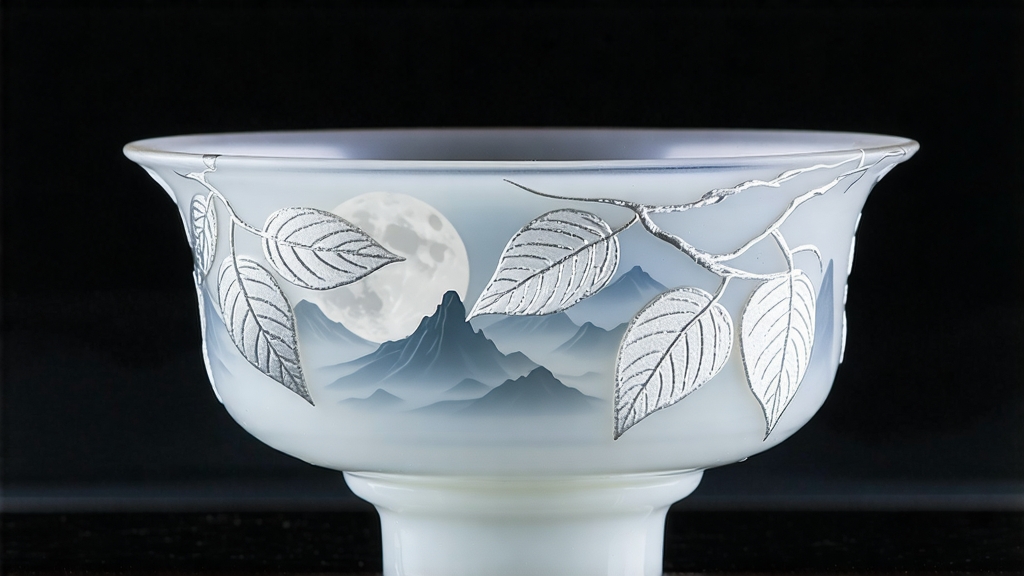
Tucked away in the mist-veiled highlands of southern Yunnan, where the Mekong bends like liquid jade and wild orchids scent the night air, a tea that looks as if it has been kissed by moonlight quietly comes to life. International catalogs usually file it under “white tea,” yet Yunnan Moonlight White—Yue Guang Bai in its homeland—refuses to fit neatly into any Western taxonomy. It is neither the silver-needle minimalism of Fujian nor the sun-dried rusticity of shou mei; instead, it is a genre of its own, born from Dai minority wisdom, altitude-induced slow growth, and a nocturnal withering ritual that feels closer to alchemy than agriculture.
The origin story is part legend, part market pragmatism. In the late 1990s, as Pu-erh’s star began its meteoric rise, tea engineers in Lincang sought a lighter, faster-consumption alternative that could still command Yunnan’s terroir premium. They borrowed the “pick-then-wilt” principle of Fujian white tea but replaced the coastal sea breeze with mountain night dew. A Dai farmer is said to have spread fresh leaves on woven bamboo trays, forgotten them under a full harvest moon, and returned at dawn to find the tips glowing like polished ivory. Whether apocryphal or not, the imagery stuck, and Moonlight White entered the commercial lexicon around 2005.
Botanically, the tea is built on Da Ye cultivars—broad-leaf assamica that normally fuel Pu-erh. Yet at 1,600–1,900 m elevation, the plant behaves differently: buds grow plump but tight, protected by a downy film that refracts light in lunar silver. Farmers pick one bud plus the first two leaves, a heavier standard than Fujian’s selective needle approach. The extra leaf surface is crucial; it provides the sugars and amino acids that will later translate into peach-cream sweetness without grassy astringency.
Processing begins the moment twilight stains the sky. Baskets lined with banana leaves are loaded onto the backs of motorcycles that descend from terraced gardens within thirty minutes; any longer and the enclosed heat would trigger premature oxidation. Inside open-air sheds, the leaves are laid two centimeters deep on rattan trays elevated shoulder-high, allowing cool updrafts to pass underneath. From 8 p.m. until sunrise the next day, the only heat source is ambient mountain air hovering between 16 °C and 20 °C, with humidity at 70–75%. This long, cool withering is the signature step: enzymes nibble gently at catechins, converting them into floral lactones, while caffeine forms complexes with chlorogenic acid, softening bitterness.
At dawn, when the ridges blush pink, the leaf edges have curled inward like tiny scrolls, and the once-jade face has faded to ash-green while the back remains silvery. Now comes the “moon-set bake,” a Yunnan twist unknown in Fujian. Trays are stacked inside a solar greenhouse whose translucent roof filters 60% of UV. For three to four hours, the leaves bask in diffused warmth that does not exceed 32 °C. The goal is not desiccation but stabilization: moisture drops from 70% to roughly 45%, arresting oxidation while preserving the nocturnal aromatics. A final twenty-minute shade rest equalizes residual moisture before the tea is gently flaked off the trays, yielding a finished leaf that is still supple enough to bend without snapping—an indicator that cell walls remain intact, safeguarding aging potential.
Unlike classic white teas, Moonlight White is pressed. The slightly pliant leaves are steamed for eight seconds, just enough to awaken surface sugars, then stone-pressed into 100 g mini cakes called “coins” or 200 g domes called “mushrooms.” Compression is lighter than Pu-erh, allowing micro-airflow that encourages slow, honey-like maturation. A five-year-old coin acquires a reddish amber infusion and notes of dried apricot, whereas a fresh harvest glows pale champagne and smells of night-blooming jasmine.
Brewing Moonlight White is an exercise in restraint. A 150 ml gaiwan receives 4 g of leaf—roughly two heaped tablespoons. The first rinse uses 75 °C water and is discarded after five seconds, not for cleanliness but to prime the leaf skeleton. Subsequent steeps ascend in five-second increments: 15 s, 20 s, 25 s, etc. Water temperature